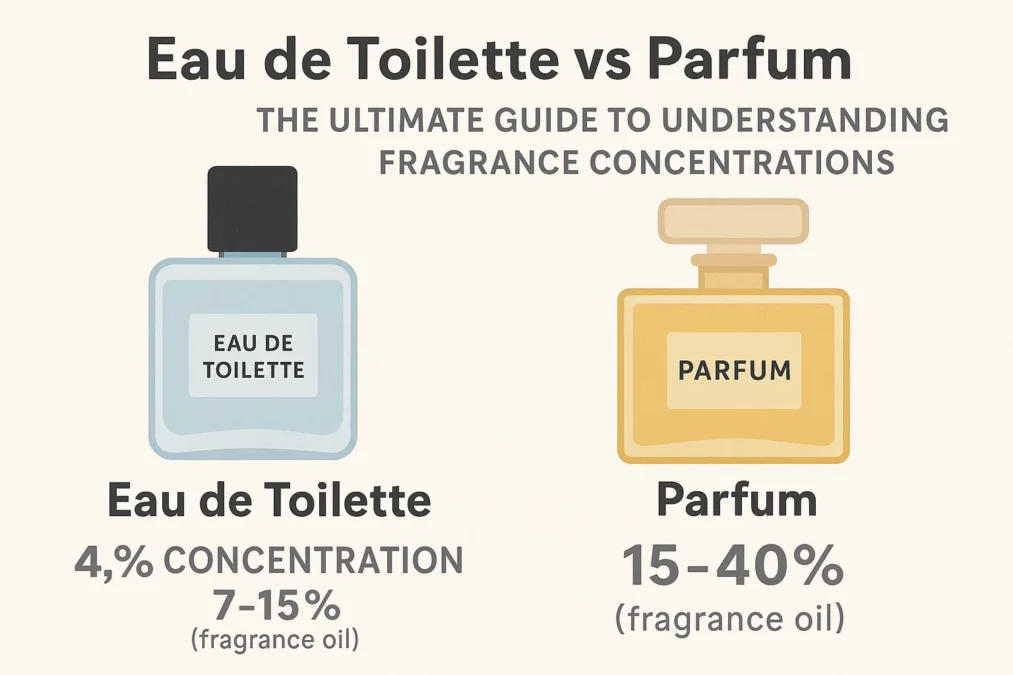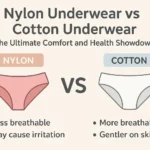You stand in the fragrance aisle, mesmerized by the beautiful bottles and the promise of a signature scent. You spritz one on your wrist, then another. They smell incredible. But then you notice the labels: one says Eau de Toilette, another says Parfum (or perhaps Eau de Parfum). The price difference is significant. You wonder, is it worth splurging on the more expensive option? What exactly is the difference, besides the cost? This is a common dilemma for fragrance enthusiasts and newcomers alike. The world of perfumery is filled with French terminology that can feel exclusive and confusing. But fear not—understanding the distinction between these terms is the master key to unlocking a more intentional and satisfying fragrance experience. It’s not about one being universally better than the other; it’s about knowing which is better for you, for a specific occasion, or for a desired effect. This comprehensive guide will demystify the battle of eau de toilette vs parfum, transforming you from a curious bystander into a confident connoisseur. We’ll explore the science, the history, the nuances, and the practicalities, ensuring you never second-guess your fragrance choice again.
The core difference between eau de toilette and parfum boils down to one fundamental concept: the concentration of perfume oil suspended in a blend of alcohol and water. This concentration is the engine of your scent—it dictates its power, its longevity on your skin, its sillage (the scent trail you leave behind), and, of course, its price point. Think of it like the difference between a shot of espresso, a latte, and a cup of tea. They all contain coffee (or tea), but the intensity, body, and lasting effect are dramatically different. Navigating the choice between an eau de toilette and a parfum is about understanding these levels of intensity to find your perfect match.
The Heart of the Matter: Understanding Fragrance Concentrations
Before we dive into the specifics of each category, it’s crucial to grasp the framework that governs them all. A fragrance is not just a magical, singular liquid; it’s a carefully balanced solution. The two main components are the perfume oil (the concentrated essence of the scent itself, composed of a complex blend of aromatic compounds, essential oils, and aroma chemicals) and the solvent (most commonly ethanol and water, which help to dilute the oil, making it safe for skin application and allowing it to evaporate properly to release the scent). The ratio of perfume oil to solvent is what defines a fragrance’s classification. The higher the percentage of perfume oil, the more potent, long-lasting, and typically expensive the fragrance will be.
The spectrum of concentrations is a graduated scale, from the most intense to the lightest. The highest concentration is Parfum (also known as extrait de parfum or pure perfume), which can contain between 20% and 40% perfume oil. This is the most concentrated form available, offering unparalleled depth and staying power. Next down the line is Eau de Parfum (EDP), which typically contains between 15% and 20% perfume oil. It’s a powerful and popular choice, often considered the best balance of strength and value. Then we have Eau de Toilette (EDT), with a concentration usually ranging from 5% to 15%. This is the most common concentration for men’s fragrances and many daytime women’s scents, known for its lighter, fresher character. Finally, Eau de Cologne (EDC) and Eau Fraîche sit at the lighter end, with just 2-5% and 1-3% perfume oil respectively, offering a very subtle and short-lived burst of fragrance.
A Deep Dive into the World of Eau de Toilette
Let’s start with the workhorse of the fragrance world: eau de toilette. The term itself has humble origins; “toilette” comes from the French “se faire la toilette,” which means the process of getting ready. Historically, it referred to the grooming and priming process, often involving light scents. This history hints at its modern character: eau de toilette is your go-to for freshness, ease, and daily wear.
An eau de toilette is characterized by its lower concentration of perfume oil, usually falling in the 5% to 15% range. Because it contains a higher proportion of alcohol, it feels lighter and often bursts onto the skin with an immediate, bright, and sometimes alcoholic top note that quickly evaporates to reveal the heart of the scent. This composition means that an EDT develops and evolves on the skin more quickly than its more concentrated counterparts. The scent profile is often dominated by top and heart notes—think citrus, aromatic herbs, light fruits, and aquatic accords. These are notes that are inherently volatile and designed to be expressive but fleeting. As a result, the longevity of an eau de toilette is more modest, typically lasting anywhere from 2 to 4 hours on the skin before it becomes a very intimate skin scent or fades away completely.
This doesn’t make it inferior; it makes it situational. Eau de toilette is perfect for office environments where a overpowering scent can be distracting or frowned upon. It’s ideal for daytime activities, gym sessions, or casual weekend outings where you want a hint of freshness without commitment. It’s also fantastic for hot summer days where heavy, sweet scents can feel cloying and overwhelming—a light citrus or aquatic eau de toilette is refreshing and appropriate. Furthermore, the lower concentration of perfume oil makes eau de toilette the more budget-friendly option, allowing you to own a wider variety of scents for different moods without breaking the bank. It’s the casual jeans-and-t-shirt of the fragrance world: incredibly versatile, comfortable, and essential for everyday life.
The Allure and Power of Parfum
On the opposite end of the spectrum lies parfum—the pinnacle of perfumery. This is the most concentrated, luxurious, and often oldest form of fragrance. Before the advent of modern dilution and mass marketing, extrait de parfum was the primary way people experienced scent. It is the essence of the perfumer’s art in its purest form.
A true parfum contains a whopping 20% to 40% concentration of perfume oil, with very little alcohol or water. This incredibly high oil content gives it a rich, often oil-like texture that feels decadent on the skin. Because there is less alcohol to evaporate quickly, the scent of a parfum doesn’t “blast” onto the skin with an alcoholic burst. Instead, it unfolds slowly, deliberately, and with profound depth. The development of the scent is a slow-motion journey, allowing you to appreciate the intricate interplay between the base, heart, and top notes over many hours. The base notes—rich ingredients like amber, musk, vanilla, precious woods, and animalic accords—are the stars of the show in a parfum, providing a deep, resonant, and complex foundation.
The most celebrated attribute of parfum is its legendary longevity. A single application can last anywhere from 8 to 24 hours, and sometimes even leaves a trace on the skin the next day. Its sillage, however, is often more intimate than an Eau de Parfum. Rather than projecting a massive scent bubble around the wearer, a parfum tends to sit closer to the skin, creating a personal aura of scent that reveals itself in whispers to those who come close. This makes it intensely alluring and personal. Naturally, this concentration of raw materials comes at a cost. Parfum is the most expensive fragrance classification per ounce. It is typically presented in small, beautiful bottles, often without sprayers but with stopper applicators, as only a tiny dab is needed. Parfum is for special occasions, for feeling undeniably luxurious, or for creating a deeply personal scent experience that is for you and those you invite into your intimate space.
The Mighty Middle Ground: Eau de Parfum Explained
While the comparison of eau de toilette vs parfum represents two extremes, the most popular and versatile category in modern perfumery actually sits squarely between them: Eau de Parfum (EDP). This concentration has become the sweet spot for many fragrance lovers and is often the flagship concentration for many brands.
Eau de Parfum typically contains a robust 15% to 20% concentration of perfume oil. This gives it a significant power boost over an eau de toilette without reaching the opulent price point and intense density of a pure parfum. An EDP offers the best of both worlds: excellent longevity, often lasting a solid 6 to 8 hours on the skin, and strong projection or sillage, especially in the first few hours after application. It’s the concentration that announces your presence in a room without being overwhelming. In many fragrance lines, the Eau de Parfum version will often emphasize the deeper, richer base notes of the fragrance composition more than the eau de toilette version of the same scent. The EDT might be brighter and focus on the citrus and top notes, while the EDP will allow the vanilla, patchouli, or oud to shine through more prominently.
This makes Eau de Parfum incredibly versatile. It’s strong enough for evening wear, formal events, and dates, but with a careful application, it can be perfectly suitable for the office or daytime use. It’s a concentration built for performance and value. You get a significant scent experience that lasts through a workday or an evening out without having to reapply, and while it is more expensive than an EDT, it is far more accessible than a parfum. For many, discovering Eau de Parfum is a revelation—it provides the depth and performance they felt was missing from eau de toilette without the commitment required for a parfum. It’s the hero of the fragrance world for a reason.
How to Choose: It’s More Than Just Strength
So, with all this knowledge, how do you actually choose between an eau de toilette and a parfum? The decision is more nuanced than simply picking the strongest option. It involves considering your lifestyle, the occasion, the season, and even the specific fragrance itself. A great rule of thumb is to let the situation guide your hand.
For active, casual days in the spring and summer, an eau de toilette is your ideal companion. Its lighter, brighter, and fresher character complements the heat and sunshine. Scents with citrus, aquatic, green, or aromatic notes excel in this concentration. For autumn and winter evenings, dates, formal dinners, or any time you want to feel confident and make an impression, an eau de parfum or parfum is the way to go. The richer, spicier, and woodier notes that define cooler weather scents benefit immensely from the higher oil concentration, which amplifies their warmth and depth. Your skin type also plays a role. Dry skin tends to absorb and break down fragrance oils more quickly, meaning scents fade faster. If you have dry skin, you might prefer the intensity of an EDP or Parfum to combat this. Oily skin, on the other hand, holds onto fragrance longer, making it a great canvas for all concentrations.
Perhaps the most important factor is to follow your nose. The same fragrance name can smell different across concentrations. Chanel’s iconic Bleu de Chanel in Eau de Toilette is a bright, sharp grapefruit and ginger scent, while the Eau de Parfum version is darker, smoother, and emphasizes the woody and amber notes. They are related but distinct experiences. Always test the specific concentration you are considering on your skin and let it develop over hours before making a choice. Don’t assume the Parfum is automatically “better”; it’s just different. Choose the version whose journey on your skin you enjoy the most.
Beyond the Bottle: The Art of Application and Storage
Understanding the difference between eau de toilette and parfum is only half the battle; knowing how to use them correctly is the other. Application technique is crucial for optimizing your fragrance experience. For lighter concentrations like eau de toilette, you can be more liberal. Spritz it on pulse points like wrists, neck, and behind ears, but also consider clothing (be cautious with delicate fabrics) and even hair, which can hold scent well. Because it fades faster, reapplication throughout the day is acceptable and often necessary.
For potent concentrations like eau de parfum and especially parfum, less is absolutely more. One or two sprays to the pulse points are sufficient. A key technique for parfum is to dab it on rather than spray (if it has a stopper) and then not rub it in. Rubbing crushes the top notes and disrupts the fragrance’s evolution. Simply let it air dry. For all fragrances, applying to moisturized skin (unscented moisturizer is best) will help the scent last longer. Storage is equally important. To preserve the integrity of your investment, especially for higher concentrations with more precious oils, keep your bottles away from direct sunlight, heat, and humidity. A cool, dark, and dry place—like a drawer or cupboard—is ideal, not your bathroom shelf or windowsill. Proper care ensures your eau de toilette remains fresh and your parfum retains its complex magic for years to come.
The Scent of Value: Navigating Price and Perception
The price tag attached to different concentrations is a direct reflection of the raw materials inside the bottle. Since parfum contains the highest percentage of expensive perfume oils, it commands the highest price, often by a significant margin. An ounce of parfum can cost several times more than an ounce of eau de toilette from the same line. However, evaluating value requires a more nuanced approach than just looking at the price per bottle.
You must consider cost per wear and performance. While a bottle of parfum has a high upfront cost, you use a minuscule amount each time. A single small bottle could last for years. Conversely, you may go through a bottle of eau de toilette much more quickly because you apply more sprays more frequently. Therefore, the value proposition isn’t always clear-cut. An eau de parfum often presents the most balanced value for many consumers: a noticeable step up in performance and longevity from an EDT without the extreme cost of a parfum. Ultimately, the best value is found in the fragrance you love and will use consistently, regardless of its concentration. A $300 bottle of parfum that sits on a shelf because it’s “too special” to use is a worse value than a $80 bottle of eau de toilette you wear and enjoy every single day.
Decoding the Notes: How Concentration Changes the Scent
It’s a common misconception that an eau de toilette and a parfum of the same name are identical scents with different strength levels. In reality, the different concentrations can sometimes feature noticeably different scent profiles. The reason is both chemical and intentional. From a chemical perspective, a higher oil concentration means the base notes—which are heavier and longer-lasting molecules—have a much greater presence from the start. The top notes, while still there, may not burst forth with the same intensity because there is less alcohol to propel them into the air immediately.
Furthermore, fragrance houses often intentionally tweak the formula between concentrations to better suit their characteristics. They might amplify the vanilla or sandalwood in the parfum version to highlight its richness, or they might boost the bergamot and sea notes in the eau de toilette to maximize its refreshing quality. This is why it is absolutely critical to test each concentration on your skin. You might adore the bright, sparkling character of a fragrance in its EDT form but find the EDP version too dense and sweet, or vice versa. They can sometimes feel like close cousins rather than twins. Paying attention to these subtle differences is the mark of a true fragrance aficionado and ensures you bring home the scent you truly fell in love with at the counter.
Building a Fragrance Wardrobe
You don’t have to pledge allegiance to a single concentration. The most sophisticated approach is to build a small wardrobe of fragrances that covers all your needs. Think of it like your closet: you have jeans, suits, t-shirts, and workout gear. Each has its purpose.
Your collection could include a fresh, citrusy eau de toilette for daily summer wear and the office. A versatile and compelling eau de parfum could be your signature scent for evenings out, dates, and fall and winter days. And finally, a luxurious parfum could be your secret weapon for the most special occasions—anniversaries, galas, weddings—where you want to feel your absolute best and leave a lasting, intimate impression. This approach allows you to appreciate the unique advantages of each concentration without feeling like you’re missing out. It makes the choice between eau de toilette vs parfum not a dilemma, but an exciting opportunity to curate your personal scent narrative.
Conclusion
The journey through the world of eau de toilette vs parfum reveals that there is no definitive winner. The true victory lies in understanding their beautiful differences. Eau de toilette is the breath of fresh air—light, versatile, and perfect for everyday life and warm weather. Parfum is the deep, resonant whisper of luxury—intimate, long-lasting, and ideal for creating a profound personal impression. Eau de Parfum masterfully bridges the gap, offering power and presence for a wide range of occasions. The best choice is not about price or prestige; it’s about context, personal taste, and skin chemistry. The most important step you can take is to move beyond the label and experience the scents for yourself. Spray, smell, wait, and wander. Let the fragrance tell you its story on your skin. Armed with this knowledge, you are now empowered to navigate the fragrance aisle with confidence, ready to select the perfect concentration for every chapter of your life.
Intel vs AMD: The Ultimate Showdown for CPU Supremacy
Frequently Asked Questions (FAQ)
What lasts longer, eau de toilette or parfum?
Parfum lasts significantly longer than eau de toilette. Due to its very high concentration of perfume oil (20-40%), a parfum can linger on the skin for 8 to 24 hours. Eau de toilette, with its lower concentration (5-15%), is designed to be lighter and typically lasts between 2 to 4 hours before fading noticeably.
Is eau de toilette stronger than parfum?
No, this is a common misunderstanding. “Strength” can refer to two things: sillage (projection) and longevity. Parfum is stronger in terms of longevity, as it lasts much longer. However, an Eau de Parfum might sometimes have stronger initial sillage (projection) because the alcohol content evaporates more quickly, diffusing the top notes aggressively. Parfum’s scent is often more intimate and closer to the skin but lasts for an exceptionally long time.
Why is parfum so much more expensive than eau de toilette?
The price difference directly reflects the amount of precious perfume oils used in the fragrance. Parfum contains the highest concentration of these oils—often 2 to 4 times more than what is found in an eau de toilette. These raw materials are the most expensive component of the fragrance. The higher cost also accounts for the more luxurious packaging (e.g., ornate bottles with stoppers) and the fact that parfum is often a niche, low-volume product compared to mass-market eau de toilette.
Can you wear eau de toilette in the winter and parfum in the summer?
You absolutely can, but there are general guidelines for optimal wear. Heavier, spicier, and sweeter scents (often found in parfum and EDP concentrations) can feel overwhelming in the heat of summer, while light, fresh citruses and aquatics (common in EDT) might feel too faint in the cold winter air. However, the most important rule is to wear what you love. A light application of a winter parfum on a cool summer evening can be wonderful, and a bold spray of a citrus EDT can be refreshingly different in winter.
Do eau de toilette and parfum of the same fragrance smell the same?
Not always. While they share the same name and core DNA, they can smell different due to their concentration levels. The higher oil content in parfum gives more weight and prominence to the deep base notes (like woods, musk, amber), making the overall scent richer and smoother. The eau de toilette, with more alcohol, might highlight the bright top notes (like citrus and herbs) more prominently and smell sharper or fresher. It’s always best to test both concentrations on your skin to see which profile you prefer.
How should I apply parfum versus eau de toilette?
For eau de toilette, you can apply more liberally—several sprays to pulse points (wrists, neck) and even on clothing. Reapplication may be needed throughout the day. For parfum, a little goes a very long way. Use a small dab on each wrist (from a stopper bottle) or a single spray, and do not rub it in. Let it dry naturally. Applying it to your pulse points helps diffuse the scent slowly throughout the day due to your body heat.
Comparison Table: Eau de Toilette vs Parfum
| Feature | Eau de Toilette (EDT) | Parfum (Extrait de Parfum) |
|---|---|---|
| Perfume Oil Concentration | 5% – 15% | 20% – 40% |
| Longevity | 2 – 4 hours | 8 – 24+ hours |
| Sillage (Projection) | Moderate to light; creates a fresh aura | Intimate and close to the skin; less projection |
| Alcohol Content | Higher | Lower |
| Ideal For | Daytime, office, casual wear, hot weather | Evenings, special occasions, intimate settings |
| Price Point | Generally more affordable | Most expensive concentration |
| Character | Bright, fresh, light, often focused on top notes | Rich, deep, complex, focused on base notes |
| Application | Multiple sprays | Dabs or single spray |
Expert Quotes
“The difference between an eau de toilette and a parfum is like the difference between a watercolor and an oil painting. One is bright, fluid, and immediate; the other is layered, deep, and enduring. Both are art, but they speak a different visual language.” — Luca Turin, renowned biophysicist and perfume critic.
“Choosing a concentration is the final step in personalizing your scent. An eau de toilette is what you wear for the world. A parfum is what you wear for yourself—a secret luxury that you carry with you throughout the day.” — Chandler Burr, author and former perfume critic for The New York Times.
“Don’t ask which is ‘better’ between an eau de toilette and a parfum. Ask which is better for the life you want to lead today. Fragrance is an accessory to your mood and your moment.” — Marian Bendeth, Global Fragrance Expert.



